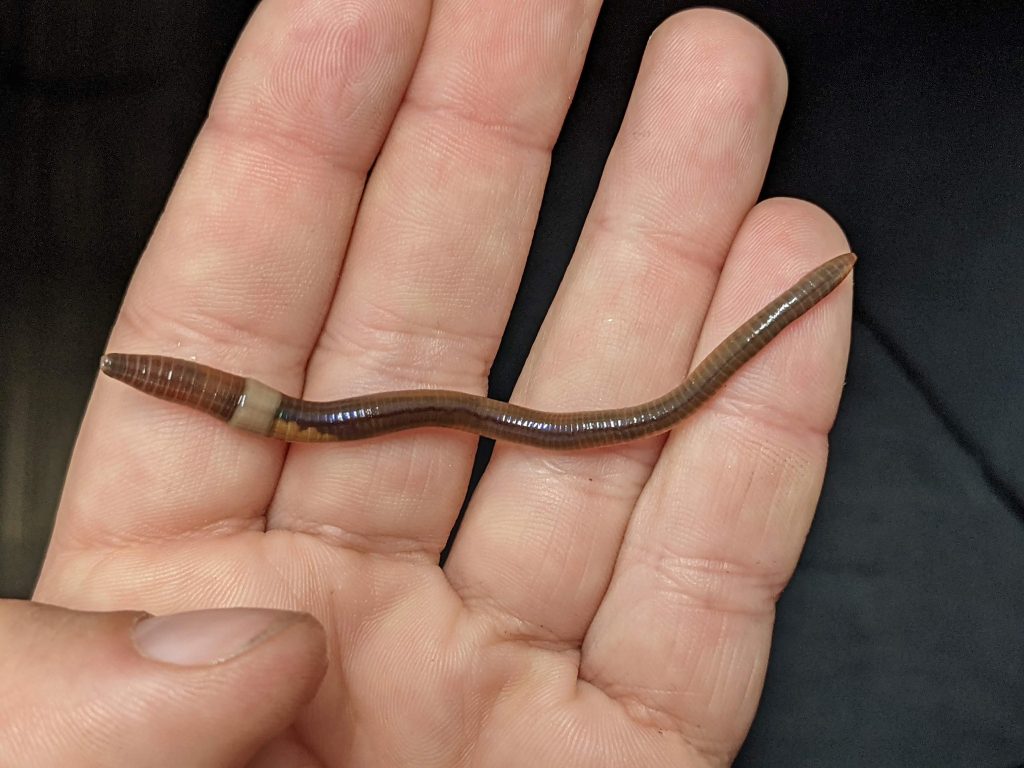| Membership | Price (+HST) |
|---|---|
| Single | $85/year |
| Single Plus | $120/year |
| Family | $130/year |
| Family Plus | $175/year |
| Contributing | $300/year |
| Supporting | $600/year |
| Sustaining | $1,000/year |
| Benefactor's Circle | $2,500/year |
| Director's Circle | $5,000/year |
| President's Circle | $10,000/year |
Invasive Jumping Worms: How to Identify & What to Do
By Karin Davidson-Taylor, Education Program Officer, Royal Botanical Gardens
Jumping worms are a new group of non-native invasive earthworms that threaten gardens and natural ecosystems. According our Head of Horticulture, Jim Mack, who has personal experience working in the US where these worms have already eaten their way through a lot of territory, jumping worms quickly destroy plants in gardens, forests and agricultural lands. They are fairly new to Ontario and travel readily when soil and plants are moved around, We need many people to be tracking their invasion here so it can be limited.
Identifying Jumping Worms
What’s the difference between jumping worms and the European earthworms that we also see in our gardens and forests?
- Jumping worms are smoother and more grey/grey brown colour with a complete milky-white ring (clitellum) close to the head. Juvenile worms will not have the clitellum.
- When disturbed, jumping worms twitch and thrash, no matter their age (sometimes even self-amputating the tail end of their body!).
- Jumping worm castings (aka “worm poop”) look like loose, crumbly coffee grounds. This material can cover a large area and be ~1 cm to several centimetres deep. If you see the ‘coffee ground’ castings, move the pile a bit and you may see the worms. European earthworm castings are in little heaps (middens) around a hole in the soil.


What can you do? Participate in a Community Science project!
First thing to do is search your local area – your garden, local park or other natural area. If you find jumping worms, take pictures and videos! The Early Detection and Distribution Maps surveillance program is tracking and mapping the distribution of these aggressive worms.
You can help by reporting them using the survey links found below to help add more information to the database! Use your phone or your computer to submit a report. Even if you don’t find any jumping worms, report that too as that information is just as important!
EDDMaps & How to Report
*When reporting a jumping worm observation on EDDMapS, please answer these survey prompts under “Additional Information”:
- Is this the first time you noticed suspected jumping worms in this location? If not, when did you first notice them?
- Did you recently introduce any soil amendments (e.g., soil, mulch) or plants to this location? If yes, please describe (a) the types of amendments/plants, (b) when they were added, and (c) where they were purchased (please use general descriptors [e.g., nursery], DO NOT identify specific businesses).
- Have you observed any negative impacts in the area that you think might be associated with the suspected jumping worms? If yes, please describe.
Learn More About Jumping Worms
Looking to learn more about jumping worms and how to identify or report? RBG hosted experts in a free public webinar, and the recording is now available on YouTube!
Dr. Michael McTavish (University of Toronto) provides an overview of invasive earthworms in North America, describes the negative impacts of jumping worm invasion, and provides tips on what you can do to help. Brook Schryer (Ontario’s Invading Species Awareness Program) then takes you through the steps of how to report using EDDMapS (Early Detection and Distribution Mapping System).
More from the RBG Blog
Check out RBG’s blog for announcements, articles, and more from Canada’s largest botanical garden.
Want to be sure you hear first? Sign up for our weekly e-newsletter to hear about upcoming events, weekend activities, articles, and more!












